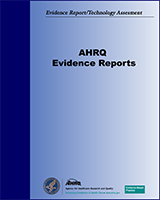From: 1, Introduction

Effects of Omega-3 Fatty Acids on Cognitive Function with Aging, Dementia,
and Neurological Diseases.
Evidence Reports/Technology Assessments, No. 114.
MacLean CH, Issa AM, Newberry SJ, et al.
Rockville (MD): Agency for Healthcare Research and Quality (US); 2005 Feb.
NCBI Bookshelf. A service of the National Library of Medicine, National Institutes of Health.